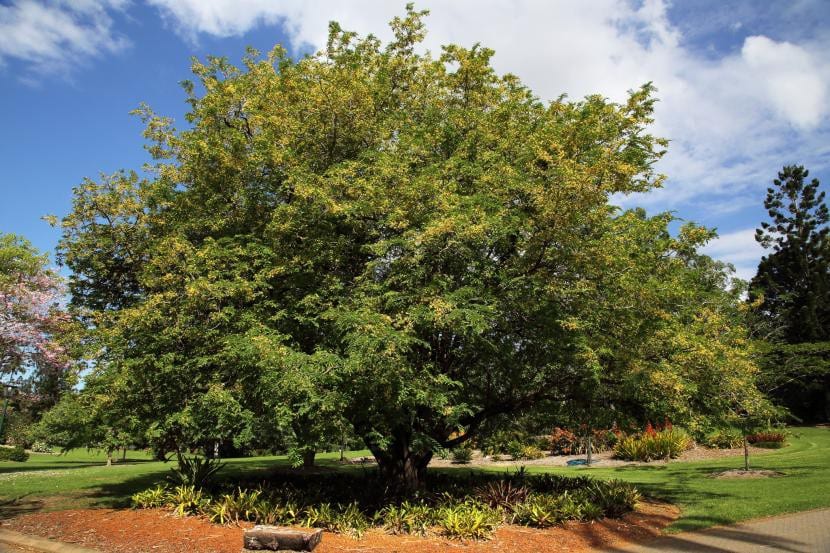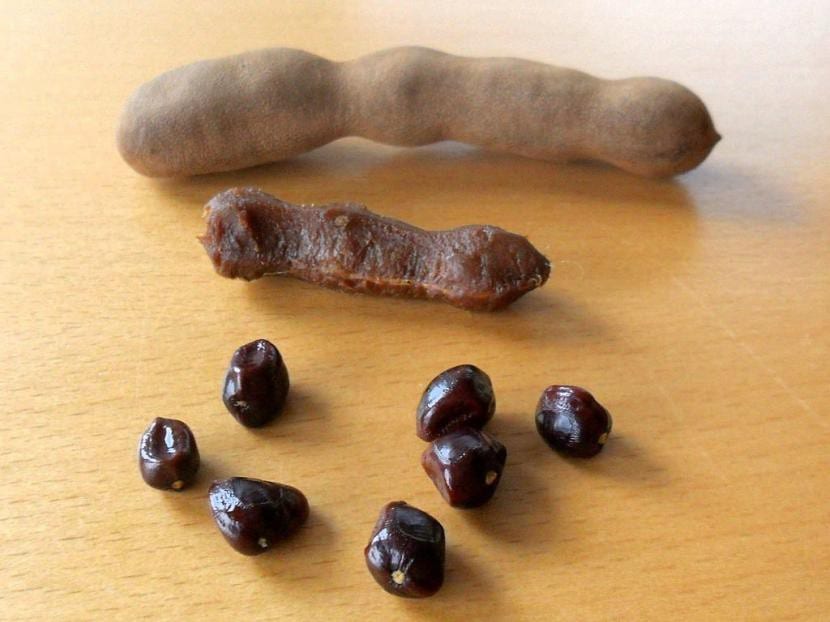
The tamarind is a tropical tree that can reach 30 meters in height. Although it has a great ornamental value, in regions that enjoy a climate without frost it is grown above all for its fruit. But why?
The tamarind fruit is widely used both in cooking and in natural medicine. So if you intend to have a copy at home and want to get the best out of it, you cannot miss this article 🙂.
What is tamarind like?

First of all, if you want to buy a tree you will need to know what its characteristics are to know where to put it so that you can contemplate it in all its splendor. Here we go: tamarind, whose scientific name is Tamarindus indica, is a native plant from Cape Verde to Yemen and Oman. Today it is found in all countries with a warm climate (without frost).
It is an evergreen tree that reaches 30 meters in height, with a wide crown 4-5 meters in diameter. The flowers are grouped in clusters with yellow petals with orange to red stripes. And the fruit is a legume measuring 5-20cm long by 2-3cm thick, with a matte cinnamon color. In this we will find the seeds, which are oblong, leathery, of a glossy dark brown color.
What is the fruit used for?

The fruit has various uses:
- Food: The pulp is used as a condiment, in the manufacture of soft drinks and beverages, and in sauces.
- Medicinal: it is used in cases of constipation since it is an effective laxative, as a natural but very mild sleeping pill, to stabilize and maintain normal cholesterol values, improve eye health, improve joints, to accelerate the healing of burns, and as a palliative for fever.
Do you need more information about tamarind? If so, you can click here.